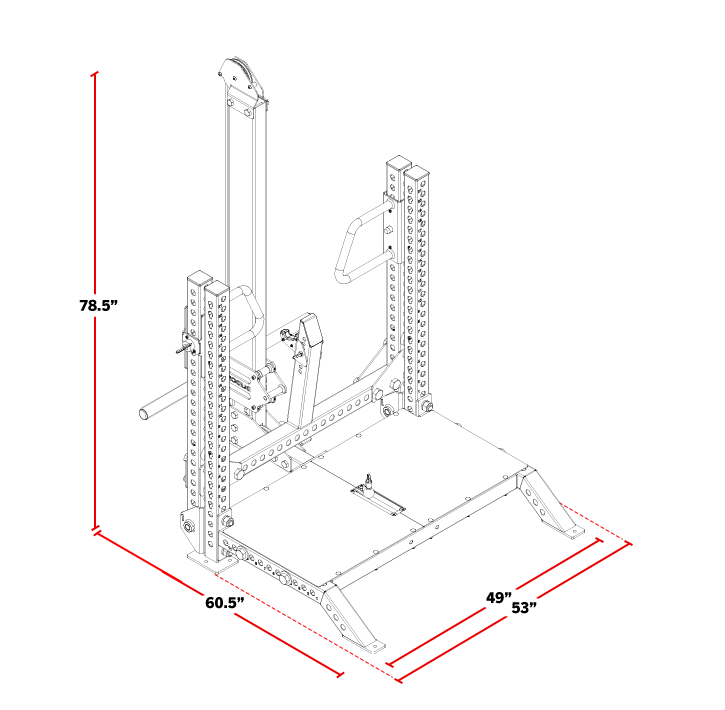Total Fitness USA
Rogue Monster Rhino Belt Squat - Stand Alone
Rogue Monster Rhino Belt Squat - Stand Alone
Couldn't load pickup availability
Manufactured in Columbus, Ohio, the stand-alone Monster Rhino Belt Squat comes with 3x3” arms and crossmembers, a 3x6” weight trolley tower, and a 0.25" braided cable for raising/lowering the weight trolley. When not in use, the trolley is stored on a 1" thick UHMW plastic hook, or “Rhino Horn.” A diamond-tread plate platform provides steady footing, adjustable handles offer overhand and neutral grip options, and our exclusive Rogue Multi Belt (included standard) easily accommodates most waist sizes, with adjustments from 41” to 61”. The entire Rhino unit (aside from the platform, handles and weight posts) is finished in our Medium Gloss Black powdercoat.
Additional Specifications:
- Made in the USA
- Patent No.: US D896,326 S
- Freestanding Version (does not require existing rack/rig)
- Ships Freight, Some Assembly Required
- Height of Tower (from floor): 78.5"
- Height of Platform (from floor) 7”
- Footprint: 53" x 60.5"
- (2) Weight Posts with 15.75” loading capacity on each
- Unloaded Trolley Weight: 27.5LB (+/- 1LB)
- 3x3” Arms and Crossmembers
- (2) Welded-On Band Pegs for resistance work
Set-Up: The Monster Rhino Belt Squat ships freight, some assembly required, and it must be bolted to the floor before use. A pair of Monster 1” Wrenches are included, however additional tools will be required to finish assembly. When complete, the trolley tower will reach a height of 78.5" from the floor. The freestanding / stand-alone version has a total footprint of 53" x 60.5", and extends approx. 21.5" off the legs. Please Note: Additional clearance (beyond 21.5") is required for adding plates.
Using the Rhino Belt Squat: Step onto the platform and strap on the Rogue Multi Belt around your hips. Upon standing up, the trolley will rise and disengage from the Rhino Horn. This allows users to then pull back on the handles and start squatting. Once the handles are pulled back, they will stay back until the user pushes the handles back towards the tower, allowing the horn to safely re-engage the trolley.
Benefits of Belt Squats: Performing belt squats rather than traditional back squats / front squats / Zercher squats can be beneficial for a wide range of reasons. Athletes dealing with regular back pain or struggling with spinal compression from axial loading can circumvent those issues by putting the lion’s share of the load on the hips and legs. Similarly, anyone rehabbing from an upper body injury (shoulder, elbow, wrist, hand, etc.) can still get in their lower body work without having to worry about supporting a barbell.
Belt Squats provide traction to the spine, help add substantial volume to the legs, and offer versatility for other types of training, from calf raises to rows, shrugs, and deadlifts—all easily performed even in a home gym with limited space. A pair of welded-on Band Pegs are included with the system for additional resistance work.
Share



















